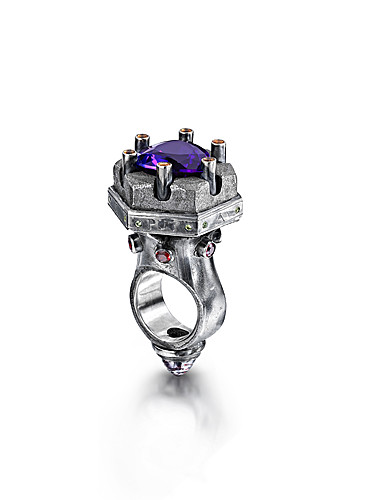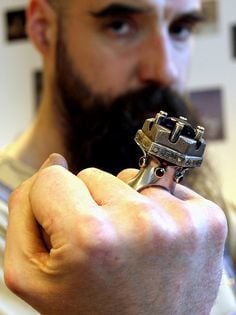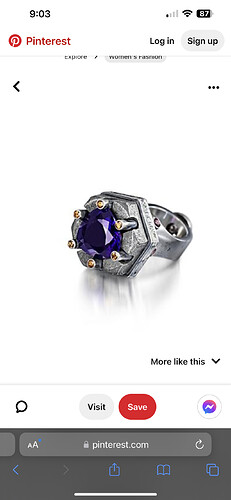Hi, it’s me again. I’ve got a question for everyone. I’ve run across a few things where tube set stones were then used as claws to set a much bigger stone. I’ve found a few examples, but I haven’t been able to figure out exactly how they did it. I want to use this technique to set several 15mm round brilliant cut stones with 3mm stones going in all the tubes around the bigger stones. Here’s a picture of an example of one that I found.


So the book I have that shows this particular ring in the images above says that the inside of the tubes were all burred out with a groove to accommodate the girdle of the larger stone just like in a claw setting, the larger stone was put in the center of all the tubes (the tubes were carefully placed and soldered in to allow the bigger stone to drop down in the middle of them). Then it says the tubes were levered over to hold the bigger stone in place. This is where I’m getting stuck. How would you go about levering over a tube? Because the tubes have to be placed far enough apart that you can drop the bigger stone straight down the middle of them. But how would you lever over the tubes without damaging them? You wouldn’t want them bent over to a noticeable point, they need to stand up straight, but enough that it would lock the big center stone in position. The other thing is, what does the pavilion of the big stone rest on? Or would the tubes with the grooves be enough to hold it and it be ok? I haven’t been able to find any pictures or explanations of how the inside of this setting looks like. I imagine you need to support the bigger stone underneath some how.
So if YOU were to make this setting, could you explain how you might go about doing it and what considerations need to be made? I very much want to use this on a large piece I’m doing, but I also don’t want to set all these tubes, get to setting the larger stone, and then damage everything because I’m not doing it right or taking into consideration certain things like what the pavilion of the larger stone is resting on. Now his stone in the pictures that he used (Dauvit Alexander) is a trillion cut amethyst. I’m planning on just using round 15mm stones, so they’re pretty big. I figure not only would it look awesome, but the tubes are very sturdy, possibly more than claws, they’re larger, and would offer more security to the big 15mm stones if I can successfully set it this way. I’ll have to admit, I’ve been trying to work this out for about two months now, just trying to think it through, but I don’t feel confident I’ve planned it well enough to actually try to do it yet.
Any ideas, help, or insights you have would be much appreciated!!!
